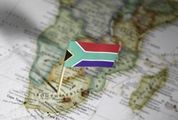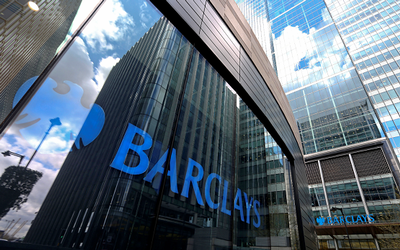AFTER weeks of rumours about plans by Barclays to exit Barclays Africa, Tuesday’s announcement that it would cut its 62% stake in the Johannesburg-based bank in the next two to three years seemed to come as a relief to the market.
The new Barclays CEO, Jes Staley, made complimentary noises about SA, indicating that the bank would be fine to remain a noncontrolling shareholder as long as it did not have to consolidate Barclays Africa’s results with its own.
Barclays Africa CEO Maria Ramos assured everyone that the UK parent’s exit was not because of any lack of confidence in SA or Africa.
But for all the soothing noises there can be little doubt that the move could hardly have come at a worse time for SA. We don’t know yet by how much the UK banking group will lighten its load, or how it will do it, but it is hard to see how the result will avoid sizeable capital outflows. And SA has enough trouble on that front already.
Regulators will have to rule on how low Barclays can go. If it can’t sell to a strong new shareholder, it may have to remain what banking regulators call the "shareholder of reference", available to support Barclays Africa if needed. The UK group is talking of a sale though, so the question is: to whom? And, crucially, would it be foreign or local?
The Africa story is still a compelling one in the longer term, but in the short term, it is hard to see another foreign group taking on the risk — at least not one that would be acceptable to SA’s banking regulators. They might be reluctant in any event to risk letting in another large but fickle foreign shareholder.
But with the sliding rand cutting hard currency returns to anyone who wants to come in, and many of the big international names downsizing rather than expanding, it’s not easy to see who that might be.
Nor is it clear where Barclays Africa might find a large domestic investor. If the notion of SA’s big four becoming a big three were to be re-opened that could, in theory, be an option, but it would be a pretty dramatic turnaround after the last effort — Nedcor’s bid for Stanbic — was quashed many years ago.
That will mean finding other buyers. Any domestic buyer(s) will, however, mean capital flows out of SA to pay for part or all of Barclays’s stake, worth more than R70bn.
Equally, if a buyer cannot be found and some of the stake ends up being unbundled to Barclays shareholders, that could see sizeable outflows too, given that only about 20% of Barclays’s Absa shares are in South African hands.
This comes in a context in which the capital inflows on which SA has long relied to finance the deficit on the current account of its balance of payments have been drying up.
It’s not just a South African thing. Emerging markets saw $735bn of capital outflows last year, according to the Institute of International Finance, which predicts more to come.
But SA’s own weak growth prospects, with policy mistakes and political own goals, have exacerbated the problem. SA has traditionally been quite poor at attracting more durable foreign direct investment (FDI) flows on any scale, relying for the most part on more volatile portfolio flows into its equity and bond markets.
New Reserve Bank figures on capital flows will be out soon. Its December quarterly bulletin showed dwindling portfolio flows in the third quarter, dropping to little more than a fifth of the previous quarter’s total, with more flowing out of SA than flowing in. JSE figures showed only a minimal positive in sales of equities and bonds to foreign investors last year, while the year to date has seen net sales of R24bn.
FDI was positive in the third quarter, but mainly because of loans foreign multinationals made to their South African subsidiaries rather than new investment proper. And for the year as a whole, the definitive United Nations Conference on Trade and Development figures show FDI into SA fell 74% to just $41.5bn.
Nor is Barclays the only divestment on the horizon, even if it’s the largest. US oil major Chevron also wants to sell out of its South African business — for reasons that have nothing to do with SA, says the group. While local rivals have expressed interest, a sale would mean a capital outflow of about $1bn, which is what an oil company source believes the stake is worth. With mining houses such as UK-based Anglo American divesting assets, there could be further outflows.
There are also inflows — Associated British Foods seeking to buy out minorities in its Illovo Sugar subsidiary, for example — but these are relatively small money compared with a possible Barclays Africa outflow.
By far the biggest inflow on the horizon relates to Anheuser-Busch InBev’s bid for SAB Miller, which analysts estimate at upwards of R75bn. SA’s regulators, particularly competition regulators, have tended of late to take forever to process deals. They might want to hurry up on this one.
And for SA, the growing risks to the capital account should be a signal that we need urgently to spruce up our act and make the country more attractive to investment.
Otherwise, for all the assurances, we could see more walkouts.
• Joffe is editor at large





















Change: 0.80%
Change: 0.61%
Change: -0.25%
Change: 0.13%
Change: 4.02%
Data supplied by Profile Data
Change: 1.13%
Change: 0.37%
Change: 0.80%
Change: 0.00%
Change: 0.33%
Data supplied by Profile Data
Change: -2.03%
Change: -1.51%
Change: -1.45%
Change: -2.26%
Change: -0.91%
Data supplied by Profile Data
Change: 0.07%
Change: 3.71%
Change: 2.65%
Change: 3.36%
Change: 4.99%
Data supplied by Profile Data